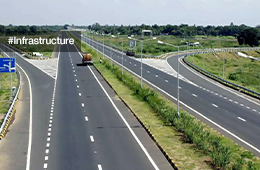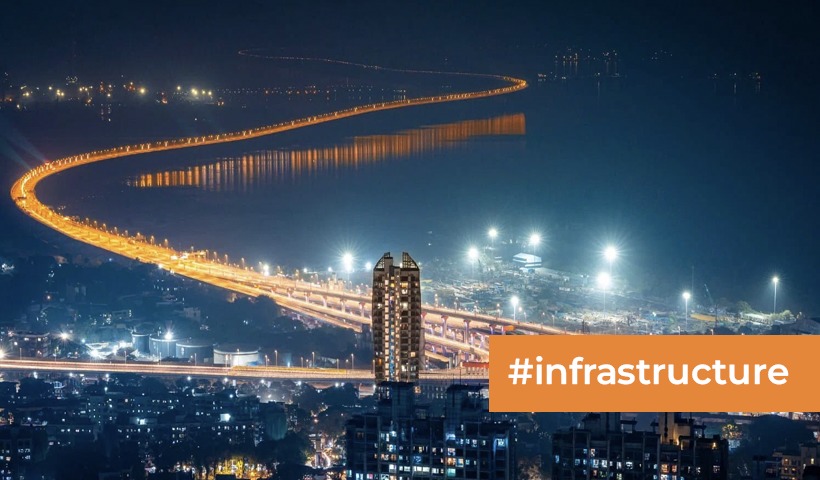E- highways and how they will impact real estate
Delhi and Mumbai are two important cities, and connecting them is one of the central government’s top priorities. The Delhi-Mumbai Expressway, a 1250 km Greenfield project with an estimated cost of Rs 90,000 crore, is currently under construction to relieve congestion on NH-8.
If everything goes smoothly, India’s first e-highway could be built on the Delhi-Mumbai Highway shortly. According to reliable sources, the Road Ministry estimates that the first length of the e-highway would be completed by the middle of 2022.
An electric highway is seen as a cost-effective approach to minimize carbon emissions. According to reports, the Indian government is launching pilot projects to develop electric motorways, with the first length expected to be completed by mid-2022. The Delhi-Jaipur route also will be used as a trial project to construct the country’s first electric motorways, according to the Indian government.
According to sources in the road ministry, the first section of e-highways is projected to be completed by mid-2022. Vehicles traveling on an electric highway or road get their batteries replenished. It is recognized as a cost-effective choice that helps to reduce carbon emissions.
Nitin Gadkari, Minister of Road Transport and Highways, has prioritized the e-highway project. Gadkari indicated in a 2016 interview with PTI that India might soon have an electric highway akin to Sweden’s. From the sources of representatives from an e-highway technology firm, they have been in discussions with the Modi government since 2017 and that the technology has already been deployed. Road freight is predicted to rise in absolute terms and remain the largest source of CO2 from freight, even under ambitious scenarios to transfer commodities transit to electrified rail. We all rely on trucks to get the goods and services we require daily. However, transportation is responsible for 24% of worldwide CO2 emissions.
Road freight transit contributes significantly to these emissions. To reduce emissions by 65 percent in Germany by 2030 and reach carbon neutrality in Europe by 2045, it’s critical to look into measures that will help reduce emissions in the transportation sector. Siemens Mobility is comparing technology concepts for reducing CO2 emissions in long-haul trucking, weighing the benefits and drawbacks in terms of economic and environmental impact using eight criteria: operational range, time to market, scalability and resource efficiency, energy efficiency, the total cost of ownership, flexibility, and CO2 abatement cost.
Using eHighway on major highways gives a backbone solution for energy-efficient, low-cost, zero-emission trucking that works in tandem with other drive trains, fuels, and transportation technology trends (e.g., automated or high-capacity vehicles). The eHighway technology can be used in a variety of scenarios.
The Delhi-Mumbai Expressway, a 1,250-kilometer controlled-access expressway that would reduce travel time between the two cities from 24 to 12 hours, was proposed by the Indian government to connect two of the country’s economic capitals. The project’s foundation stone was laid in March 2019, and the highway is expected to open on January 26, 2023. The eight-lane motorway will go through five states and many greenfield warehousing centers.
While the greenfield project was undertaken to provide connection to many of the country’s underdeveloped areas as well as an alternative route to the already congested NH-48 (which now connects Delhi and Mumbai), it is also expected to have significant real estate consequences along its course. Many villages will be developed along the new greenfield expressway route and connected link roads in Haryana as a result of the project. NHAI proposes planting tens of thousands of trees along the expressway, as well as equipment for water harvesting and the development and use of solar electricity. In addition, the government is considering constructing industrial clusters (including MSMEs) along the Delhi-Mumbai Expressway, as well as creating jobs in various leather, plastic, chemical, and other clusters that would be constructed alongside smart cities and villages.
Land acquisition for the projected city:
Following the project’s re-alignment, the NHAI paid a land purchase cost of INR 70 to 80 lakh per hectare for obtaining the project’s land. While the project’s land acquisition in Haryana is complete, it is still proceeding in Rajasthan, Madhya Pradesh, Gujarat, and Maharashtra. The project is being built by DME Development Ltd, an NHAI-owned special purpose company (SPV). The SPV is in charge of the expressway’s finance, construction, and operation.
A piece of advice for home buyers and investors looking to invest in a township near a new expressway:
If you want to buy a piece of land or property near the expressway, the first option is to buy near both of the expressway’s access locations in Delhi-NCR. For those seeking early price appreciation, an investment near/in Alipur in Sohna on the Sohna-Gurgaon Corridor is recommended.
Buyers looking for a long-term investment might invest in properties/land being developed on the crossroads of Haryana’s Sohna, Palwal, Manesar, and Nuh districts, near the under-construction expressway.
Disclaimer: The views expressed above are for informational purposes only based on industry reports and related news stories. PropertyPistol does not guarantee the accuracy, completeness, or reliability of the information and shall not be held responsible for any action taken based on the published information.



